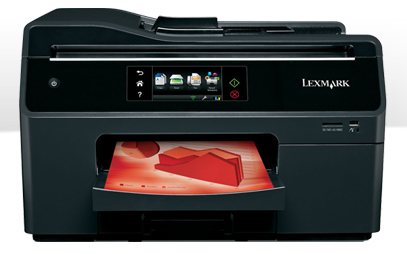Lexmark to exit inkjet printers, cut 1,700 jobs

Lexmark on Tuesday said it will exit its inkjet printer business and cut 1,700 jobs around the world in a move to save roughly $95 million annually.
The company, a former spin-off from IBM, is stuck in a cut-throat inkjet printer market that features HP and Canon as No. 1 and No. 2 respectively.
Lexmark said that it will provide supplies, service and support to its inkjet installed base. The move allows Lexmark to focus on high-value imaging and software, the company said in a statement.

Specifically, Lexmark said it will cut jobs related to inkjet manufacturing, development and support. The company will close its Cebu, Philippines manufacturing facility by the end of 2015. That closure will eliminate 1,100 manufacturing jobs. Another 600 jobs will be lost as inkjet development is terminated by the end of 2013.
Lexmark added that it is also looking into a sale of its inkjet technology.
For shareholders, Lexmark said it will begin a plan to buy back $100 million in shares through the third and fourth quarters of 2012.
The company indicated that it will take a $160 million pre-tax hit for the restructuring with $110 million incurred in 2012.
Lexmark CEO Paul Rooke made the following points on a conference call:
- The company is focusing on its Perceptive Software unit, which will deliver an operating profit in 2013.
- Lexmark will focus on business workgroup multifunction printers and fleet management.
- New inkjet platforms just weren't enough to offset aggressive pricing. Analysts estimate that HP sells printers at a loss to sell ink supplies.
Rooke added:
So why now? First of all, while the business acceptance of the products and ink usage has improved with our latest business inkjet platforms, we concluded it wasn't going to be enough to overcome the aggressive market pricing and future investment required to require a sustainable acceptable return on invested capital for the future. Let me be clear. While we were exiting inkjet, we were not exiting the business color market. Which brings me to the second point. We are continuing to advance the performance of our color laser technology, and are confident the new advances we have planned will be competitive with other color lasers as well as expected future business inkjet advancements. We believe these advancements will enable lasers to maintain their status as a preferred technology for higher-usage, business color workgroup devices, and a key focus of ours. And third, we are moving from a hardware-centric to a solutions company. An added benefit of this decision is that it will help accelerate the move as we redeploy some resources towards advancing this shift.